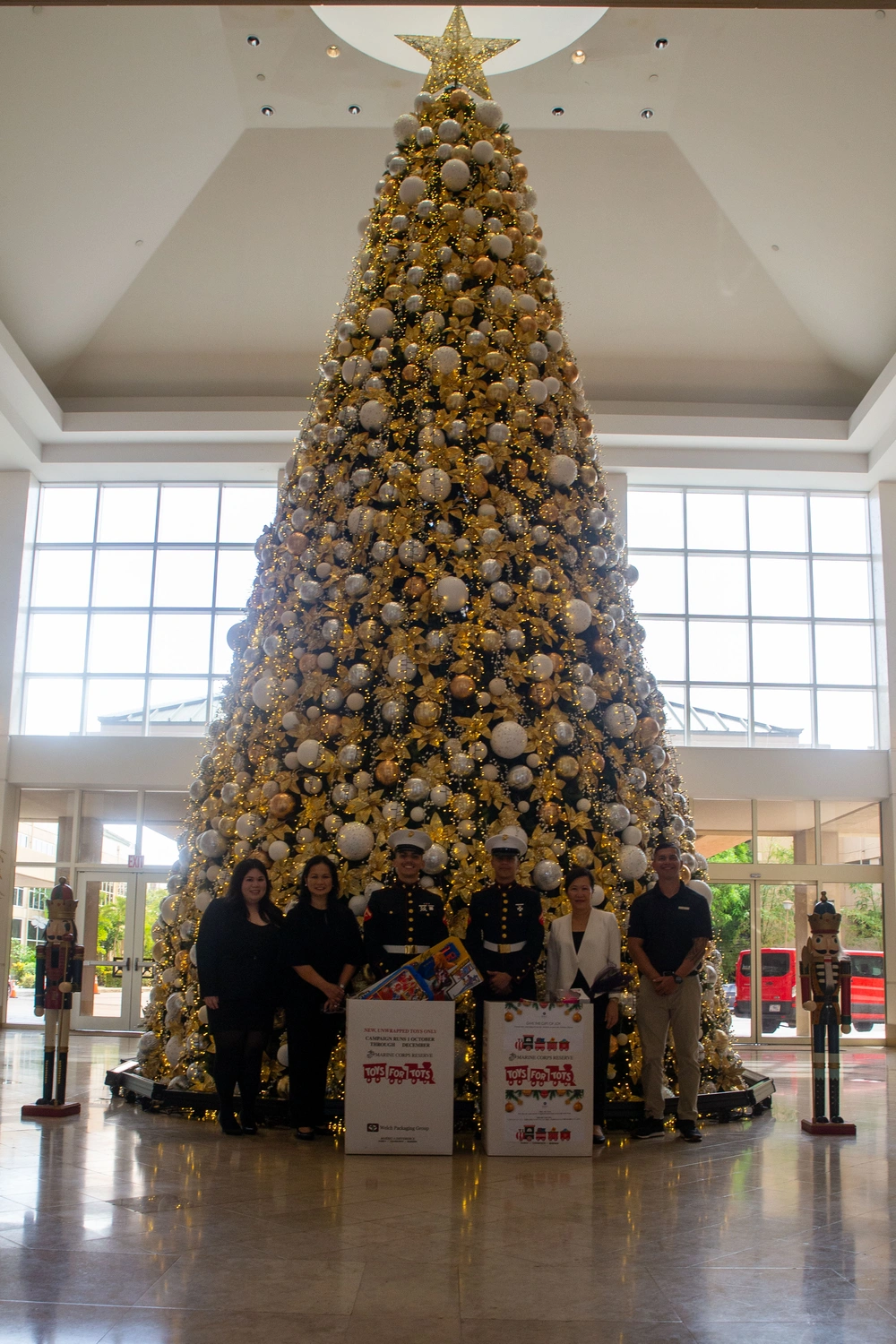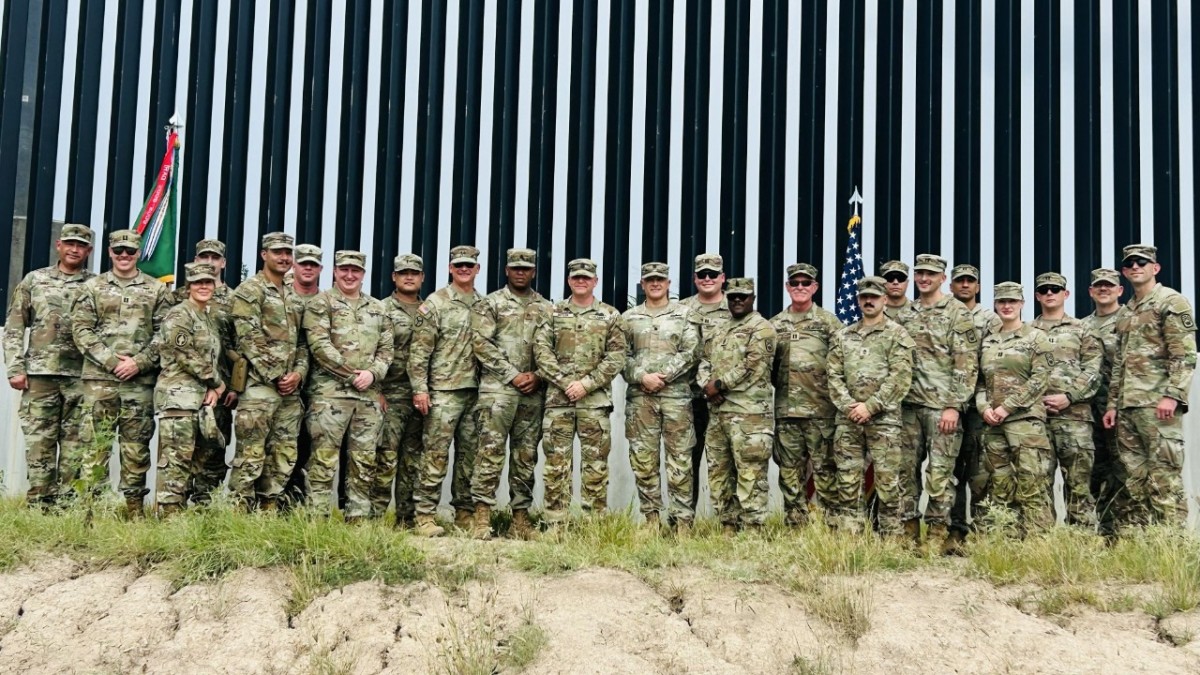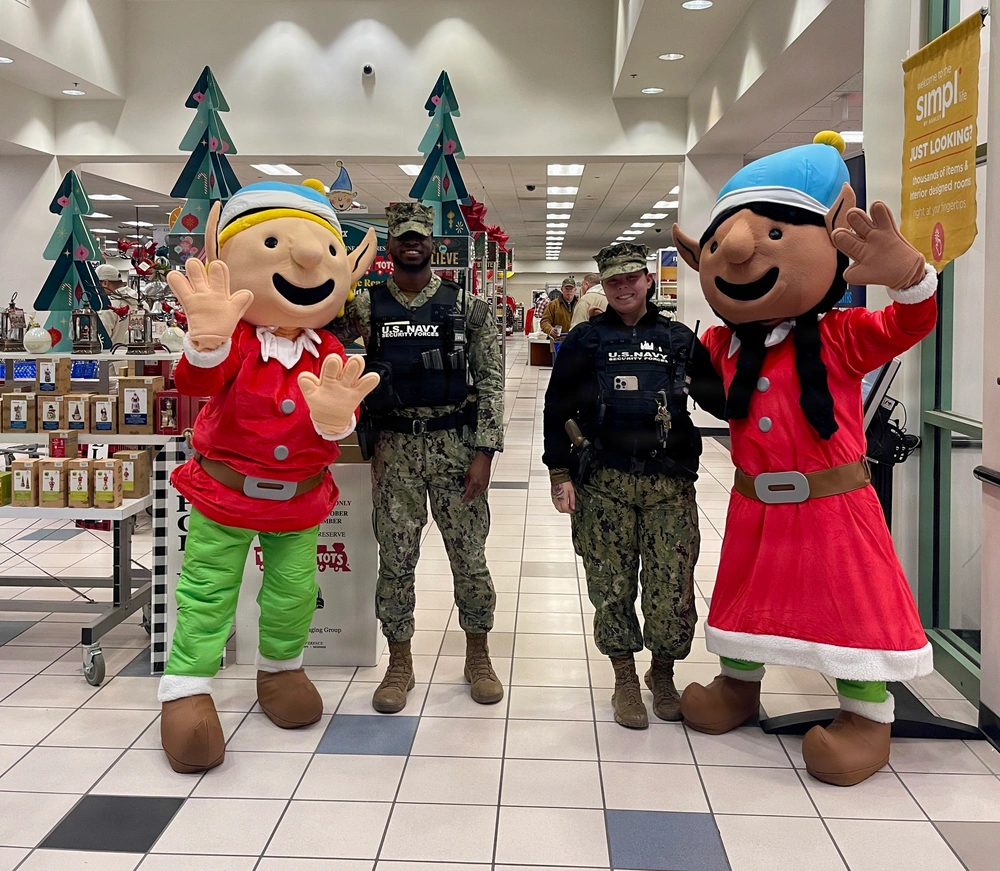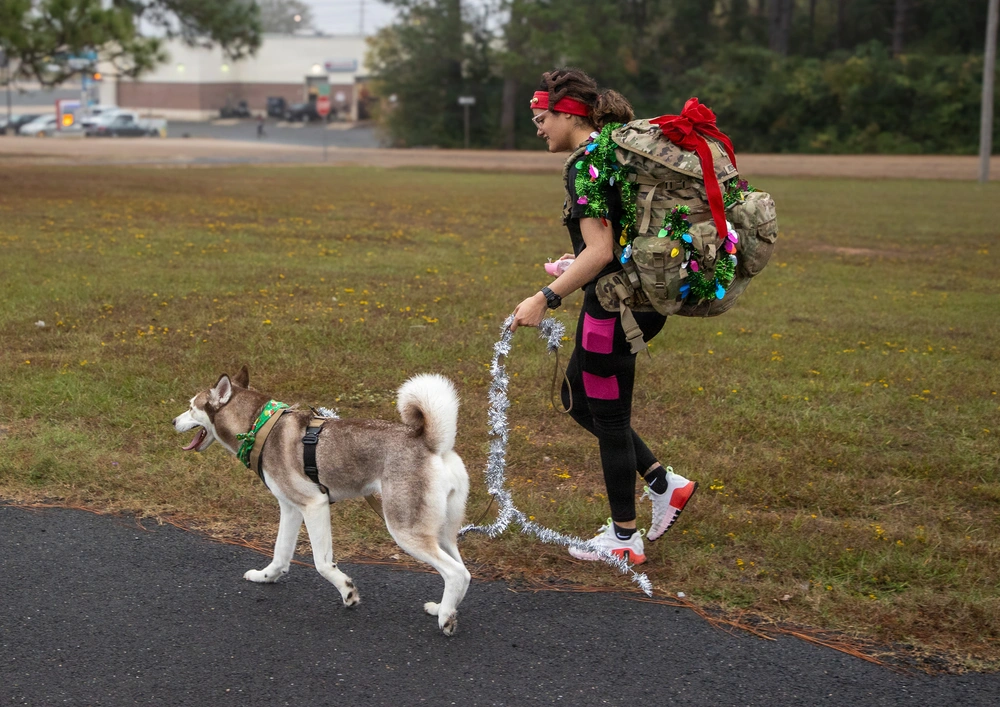- Details
- Hits: 71

ANDERSEN AIR FORCE BASE, GUAM, (December 5, 2025): 374th Airlift Wing - Service members and volunteers from multiple nations prepare and build airdrop bundles for Operation Christmas Drop 2025 at Andersen Air Force Base, Guam. OCD25 is the Department of War’s longest-running humanitarian airlift mission. It began in 1952 after a U.S. Air Force B-29 crew flying near Guam spotted islanders waving from below and dropped supplies as an act of goodwill. (U.S. Air Force photo by Senior Airman Alexzandra Gracey)
- Details
- Hits: 131

TUMON, GUAM, (December 4, 2025): U.S. Marine Corps Lance Cpl. Preston Pacheco, military police, Provost Marshal's Office, Marine Corps Base Camp Blaz, and Lance Cpl. Ivan Kerrigan, aviation ordnance systems technician, Headquarters Company, MCB Camp Blaz, pose for a photo with employees from Hyatt Regency during the 2025 Toys for Tots collection, Tumon, Guam, Dec. 4, 2025. The Marines with MCB Camp Blaz in participation and coordination with the Guam Chamber of Commerce collect new unwrapped toys for distribution to children in the local area and neighboring Commonwealth of the Northern Mariana Islands during the holiday season. (U.S. Marine Corps photo by Lance Cpl. Afton Smiley)
- Details
- Hits: 107

CAMP PENDLETON, CALIFORNIA, UNITED STATES, (November 23, 2025): A Christmas tree is lit during the annual Tree Lighting Celebration at Marine Corps Base Camp Pendleton, California. The event, hosted by Marine Corps Community Services, brings together service members, families, and civilian employees of MCB Camp Pendleton to celebrate the holiday season. (U.S. Marine Corps photo by Lance Cpl. Caitlyn Stone).
- Details
- Hits: 412
 Soldiers from the Tennessee National Guard 168th Military Police Battalion pose for a photograph at the U.S. Southern Border during their deployment supporting the U.S. Border Patrol in the Rio Grande Valley Sector near Edinburg, Texas. (Army Guard photo)
Soldiers from the Tennessee National Guard 168th Military Police Battalion pose for a photograph at the U.S. Southern Border during their deployment supporting the U.S. Border Patrol in the Rio Grande Valley Sector near Edinburg, Texas. (Army Guard photo)
U.S., (December 3, 2025): The past two weeks have in my opinion seen an extraordinary and unique occurrence in American history: a well-funded, highly-coordinated, group of partisan citizens inside America publishing a widespread media blitz calling for sedition and disobedience within the United States military, and seeking to sever its chain of command, something usually only seen in the final stages of choosing of sides in revolutions and civil wars.
In short, in my opinion, these messages are telling military service members not to obey their leaders, in essence calling for the overthrow of existing American authority through yet another means in addition to all the other means of opposition and disruption observed in play against our servicemember across multiple domestic and foreign fronts over the past several months.
These actions have emboldened America’s enemies and resulted in death to both American civilians and American military servicemembers (our neighbors who signed up to protect us) here at home and abroad, particularly wrongful because it is well known that the enemy is thick amongst us.
18 U.S. Code § 2387 - Activities Affecting Armed Forces Generally:
(a) Whoever, with intent to interfere with, impair, or influence the loyalty, morale, or discipline of the military or naval forces of the United States:
(1) advises, counsels, urges, or in any manner causes or attempts to cause insubordination, disloyalty, mutiny, or refusal of duty by any member of the military or naval forces of the United States; or
(2) distributes or attempts to distribute any written or printed matter which advises, counsels, or urges insubordination, disloyalty, mutiny, or refusal of duty by any member of the military or naval forces of the United States—
Shall be fined under this title or imprisoned not more than ten years, or both, and shall be ineligible for employment by the United States or any department or agency thereof, for the five years next following his conviction.
- Details
- Hits: 66

LEMOORE, CALIFORNIA, UNITED STATES, (November 28, 2025): NEX locations around the world surprised and delighted patrons over the Navy Blue Holiday weekend Nov. 28 – 30, 2025. NEX elves Dot and Dash were also on hand to spread holiday cheer to young and old alike. The Navy Exchange Service Command (NEXCOM) enables warfighter readiness and strengthens the Navy’s quality of life mission. Providing essential products, services, hospitality and outfitting Navy communities around the globe, NEXCOM is continuously evolving to meet the demands of today’s military operational environment. (U.S. Navy photo)
- Details
- Hits: 129

UNITED STATES, (November 21, 2025): Fort Polk Public Affairs Office - Soldiers, families and civilians gathered at Fort Polk, La., for the annual Toy Drive Ruck March. Participants completed a three-mile ruck and donated toys at the Home of Heroes Headquarters. The collected toys will be available free of charge for Soldiers and their families to gift their children for Christmas. (U.S. Army photo by Porsha Auzenne)


